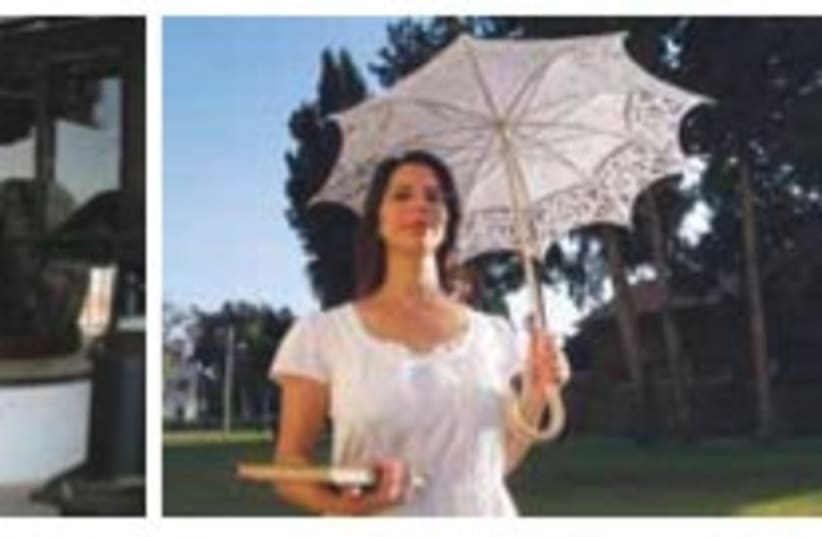Tel Aviv-Jaffa has the exceedingly rare, contradictory distinction of being both one of the oldest cites and newest metropolises on earth. With historic Jaffa nostalgically referred to as the 'Belle of the Mediterranean' and modern Tel Aviv's comparison to New York City as 'The Big Orange,' the city has a great deal to offer in walking tours.

Neighborhoods of Tel Aviv are portals to the city’s various time periods. Three of the new tours exemplify the efforts of the municipality to return pivotal bygone epochs to public consciousness. The first is a tour of southern Jaffa; a step into Ajame invokes Jaffa’s shift outside the city walls and into modernity under the Ottoman Empire. Crossing the Chelouche Bridge to the second tour ushers in Neveh Tzedek and the First Aliya’s foundation for a Hebrew city. The final example contains the cottages by the Kirya, which resurrect the Evangelical German Templers’ agricultural colony of Sarona.
Characterized as Three Religions Under One God, the walking tour of Ajame discovers the shared heritage of Jews, Muslims and Christians in the development of Jaffa. Muslim Sheikh Ajame, whose tomb still stands in the heart of the neighborhood, lends the district its name. As the old city of Jaffa swelled and residents ventured outside its walls, this area to the south became the destination of large numbers of Christians.
Walking the neighborhood, the tour examines old churches and mosques set against modern Bauhaus structures built with the influx of Ashkenazim to the area. Aged homes decorated for Christian holidays also reveal the Muslim symbols of the crescent moon and the five-pointed stars, representing the five pillars of the Islamic faith.
The center of the neighborhood hosts a large Arab-Jewish community center, founded in 1993. Serving as a monument to coexistence in one of the country’s most successfully integrated areas, the center sponsors projects of the arts and education in addition to open community dialogues and social welfare pursuits.

Another tour, called Love and Couples, views the enchanting setting of Neveh Tzedek through the lens of romantics. Featured are love letters and alluring stories of many of the modern State of Israel’s founding fathers in their youth, at times reminiscent of US Weekly’s section on movie stars — ’Famous people fall in love, too, just like us!’
Sitting in a park in what was the first Jewish neighborhood in the new city section of Jaffa, the group is serenaded by lyrical love letters. None are more impressive than hearing the words of a young David Ben-Gurion to his American-born bride to be, Paula Munweis. ’You are the only thing I miss,’ he wrote on June 1, 1918, ’and I won’t find anything as precious as you in the whole world, not even in the Land of Israel.’
Along the narrow alleys, small cottages and bright flowers which give Neveh Tzedek its character, the group arrives at the home of the Abulafia family. Here, the guide reveals the unconventional love story of Shlomo Abulafia and Rivke Freiman. Shlomo, the scion of an ancient Sephardi Palestinian family, rides his horse one day by the new settlement of Rishon Lezion at the end of the 19th century. On this fateful journey, the wealthy, middle-aged man in Arabic dress atop an elegant white horse spies a young Ashkenazi woman and falls instantly in love. Fittingly, the couple from opposite ends of the Jewish world settle together in Neveh Tzedek, a neighborhood jointly founded by Ashkenazim and Sephardim.

Led by a woman dressed in character as a late 19th-century German settler, the Gertrude and the Big City tour brings the visitor to the country’s first taste of industrialization. The tour includes descriptions of early machines used to process agricultural products as well as to one of the first modern wineries in the Land of Israel. The Germans taught the early Zionists how to make the wine for which Israel has become so famous a century later.
’Gertrude’ takes the group through subterranean passages in her description of pre-developed Tel Aviv and offers a portrait of life in the first person. The group relives the day-to-day trials of a Westerner creating a modern life in the Levant and the challenges of raising a family and providing an education to the settlement’s children.
The municipality determined that this portion of Tel Aviv’s history is sufficiently worthy to not only preserve the section as it expanded Rehov Kaplan a few years ago, but it went to the great expense of literally moving many of the buildings several meters to maintain the continuity of the district. This section is now being developed into a commercial park in which boutique shops and cafes will intermingle with the vestiges of the area’s Teutonic past. In time, Gertrude will rise from her underground wine cellar for a fresh brewed mochachino in an endearing marriage of Tel Aviv’s past and future.
The 12 new walking tours through Tel Aviv bring the total offered by the municipality to 32. Beyond historical tours, also included are tours of the cafe and olive oil cultures in the city, architectural tours of Rothschild and the Museum District and children’s tours of the newly renovated Beit Bialik. Tel Aviv is ensuring that there is something for everyone to celebrate for its centennial milestone.
| More about: | David Ben-Gurion, Tel Aviv, Israel, Ottoman Empire |
